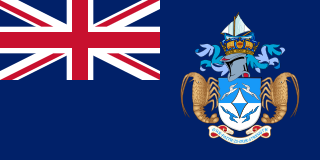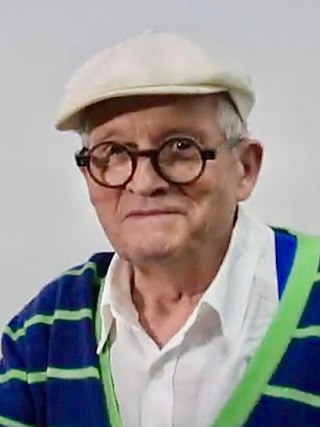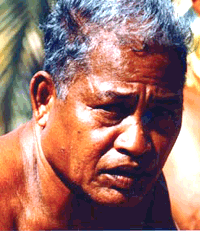Tristan Gooley | |
|---|---|
 Gooley at Bignor Hill, West Sussex in 2020 |
Tristan Gooley (born 1973) is a British writer on natural navigation. [1] [2] [3] [4] [5]
Tristan Gooley | |
|---|---|
 Gooley at Bignor Hill, West Sussex in 2020 |
Tristan Gooley (born 1973) is a British writer on natural navigation. [1] [2] [3] [4] [5]
Gooley was born in 1973; his father is Sir Michael Gooley, the founder of Trailfinders, who was knighted in 2021 for services to business and charity. [6]
Gooley has a BA in history and politics (1996) from Newcastle University. [7] [8] He climbed Mount Kilimanjaro while in his teens, [2] and, aged 19, he spent three days lost on the slopes of Gunung Rinjani, an active volcano in Indonesia. [9]
Gooley has walked with the Dayak in Borneo, [10] and in 2009 studied and practiced natural navigation methods with the Tuareg in the Libyan Sahara. [11] In 2012 he led a short-handed small boat voyage, from the Orkney Islands into the Arctic Circle, to test Viking methods and determine whether nature can help a navigator estimate their distance from land. [12] He has walked from Glasgow to London and parachuted off a building in Australia. After years of extreme journeys, aged 36 he turned towards smaller journeys and studying nature. [13]
In 2008, he became the second person, after Steve Fossett (1944-2007), to have both sailed solo and flown solo across the Atlantic; as of 2023 [update] , he is the only living person to have done so. [14] [15]
Gooley specialises in interpreting nature's signs, [16] and has been referred to as the "Sherlock Holmes of Nature". [17] [18]
He has identified a type of path, which has been recognised by the Royal Institute of Navigation. The "smile path" is a (smile-shaped) curve, formed when walkers avoid an obstacle or, during Covid, seek to preserve safe distance from other people. [19] [20]
Gooley has written for the New York Times, the Sunday Times, the Wall Street Journal and the BBC. [21] He is the author of books [22] which have been translated into 19 languages, [23] and have been referenced by artists including David Hockney. [24]
Gooley is a fellow of the Royal Institute of Navigation and of the Royal Geographical Society. [14]
In 2020 was awarded the Harold Spencer-Jones Gold Medal by the Royal Institute of Navigation in recognition of an outstanding contribution to navigation. [25]
Gooley is married to Sophie and they have two sons. They live in Eartham, West Sussex. [3]
Gooley is vice-chairman of Trailfinders, the travel agency founded in 1970 by his father. [21]
{{cite book}}: CS1 maint: location missing publisher (link){{cite book}}: CS1 maint: location missing publisher (link){{cite book}}: CS1 maint: location missing publisher (link)
Dom Henrique of Portugal, Duke of Viseu, better known as Prince Henry the Navigator, was a central figure in the early days of the Portuguese Empire and in the 15th-century European maritime discoveries and maritime expansion. Through his administrative direction, he is regarded as the main initiator of what would be known as the Age of Discovery. Henry was the fourth child of King Dom John I of Portugal, who founded the House of Aviz.

Longitude is a geographic coordinate that specifies the east–west position of a point on the surface of the Earth, or another celestial body. It is an angular measurement, usually expressed in degrees and denoted by the Greek letter lambda (λ). Meridians are imaginary semicircular lines running from pole to pole that connect points with the same longitude. The prime meridian defines 0° longitude; by convention the International Reference Meridian for the Earth passes near the Royal Observatory in Greenwich, south-east London on the island of Great Britain. Positive longitudes are east of the prime meridian, and negative ones are west.

Navigation is a field of study that focuses on the process of monitoring and controlling the movement of a craft or vehicle from one place to another. The field of navigation includes four general categories: land navigation, marine navigation, aeronautic navigation, and space navigation.

Tristan da Cunha, colloquially Tristan, is a remote group of volcanic islands in the South Atlantic Ocean. It is the most remote inhabited archipelago in the world, lying approximately 2,787 kilometres (1,732 mi) from Cape Town in South Africa, 2,437 kilometres (1,514 mi) from Saint Helena, 3,949 kilometres (2,454 mi) from Mar del Plata in Argentina, South America and 4,002 kilometres (2,487 mi) from the Falkland Islands.

Seamanship is the art, knowledge and competence of operating a ship, boat or other craft on water. The Oxford Dictionary states that seamanship is "The skill, techniques, or practice of handling a ship or boat at sea."

Celestial navigation, also known as astronavigation, is the practice of position fixing using stars and other celestial bodies that enables a navigator to accurately determine their actual current physical position in space or on the surface of the Earth without relying solely on estimated positional calculations, commonly known as "dead reckoning." Celestial navigation is performed without using satellite navigation or other similar modern electronic or digital positioning means.

David Hockney is an English painter, draftsman, printmaker, stage designer, and photographer. As an important contributor to the pop art movement of the 1960s, he is considered one of the most influential British artists of the 20th century.
Piloting or pilotage is the process of navigating on water or in the air using fixed points of reference on the sea or on land, usually with reference to a nautical chart or aeronautical chart to obtain a fix of the position of the vessel or aircraft with respect to a desired course or location. Horizontal fixes of position from known reference points may be obtained by sight or by radar. Vertical position may be obtained by depth sounder to determine depth of the water body below a vessel or by altimeter to determine an aircraft's altitude, from which its distance above the ground can be deduced. Piloting a vessel is usually practiced close to shore or on inland waterways. Pilotage of an aircraft is practiced under visual meteorological conditions for flight.

A navigator is the person on board a ship or aircraft responsible for its navigation. The navigator's primary responsibility is to be aware of ship or aircraft position at all times. Responsibilities include planning the journey, advising the ship's captain or aircraft commander of estimated timing to destinations while en route, and ensuring hazards are avoided. The navigator is in charge of maintaining the aircraft or ship's nautical charts, nautical publications, and navigational equipment, and they generally have responsibility for meteorological equipment and communications. With the advent of satellite navigation, the effort required to accurately determine one's position has decreased by orders of magnitude, so the entire field has experienced a revolutionary transition since the 1990s with traditional navigation tasks, like performing celestial navigation, being used less frequently. Using multiple independent position fix methods without solely relying on electronic systems subject to failure helps the navigator detect errors. Professional mariners are still proficient in traditional piloting and celestial navigation.
Richard Thomas Mabey is a writer and broadcaster, chiefly on the relations between nature and culture.

Gough Island, also known historically as Gonçalo Álvares, is a rugged volcanic island in the South Atlantic Ocean. It is a dependency of Tristan da Cunha and part of the British overseas territory of Saint Helena, Ascension and Tristan da Cunha. It is about 400 km (250 mi) south-east of the Tristan da Cunha archipelago, 2,400 km (1,500 mi) north-east from South Georgia Island, 2,700 km (1,700 mi) west from Cape Town, and over 3,200 km (2,000 mi) from the nearest point of South America.
Aḥmad ibn Mājid, known as "Amīr al-Baḥr al-ʿArabī" in Arabic, “Prince of the Sea” and known also as the Lion of the Sea, was an Arab navigator and cartographer born c. 1432 in Julfar,. He was raised in a family famous for seafaring; at the age of seventeen he was able to navigate ships. The exact date is not known, but Ibn Mājid probably died around 1500. Although long identified in the West as the navigator who helped Vasco da Gama find his way from Africa to India, contemporary research has shown Ibn Mājid is unlikely even to have met Da Gama. Ibn Mājid was the author of nearly forty works of poetry and prose.

Pius "Mau" Piailug was a Micronesian navigator from the Carolinian island of Satawal, best known as a teacher of traditional, non-instrument wayfinding methods for open-ocean voyaging. Mau's Carolinian navigation system, which relies on navigational clues using the Sun and stars, winds and clouds, seas and swells, and birds and fish, was acquired through rote learning passed down through teachings in the oral tradition. He earned the title of master navigator (palu) by the age of eighteen, around the time the first American missionaries arrived in Satawal. As he neared middle age, Mau grew concerned that the practice of navigation in Satawal would disappear as his people became acculturated to Western values. In the hope that the navigational tradition would be preserved for future generations, Mau shared his knowledge with the Polynesian Voyaging Society (PVS). With Mau's help, PVS used experimental archaeology to recreate and test lost Hawaiian navigational techniques on the Hōkūleʻa, a modern reconstruction of a double-hulled Hawaiian voyaging canoe.

Passage planning or voyage planning is a procedure to develop a complete description of a vessel's voyage from start to finish. The plan includes leaving the dock and harbor area, the en route portion of a voyage, approaching the destination, and mooring, the industry term for this is 'berth to berth'. According to international law, a vessel's captain is legally responsible for passage planning, The duty of passage planning is usually delegated to the ship's navigation officer, typically the second officer on merchant ships.

Polynesian navigation or Polynesian wayfinding was used for thousands of years to enable long voyages across thousands of kilometers of the open Pacific Ocean. Polynesians made contact with nearly every island within the vast Polynesian Triangle, using outrigger canoes or double-hulled canoes. The double-hulled canoes were two large hulls, equal in length, and lashed side by side. The space between the paralleled canoes allowed for storage of food, hunting materials, and nets when embarking on long voyages. Polynesian navigators used wayfinding techniques such as the navigation by the stars, and observations of birds, ocean swells, and wind patterns, and relied on a large body of knowledge from oral tradition.

HMS Bedford was one of 10 Monmouth-class armoured cruisers built for the Royal Navy in the first decade of the 20th century. She was assigned to the 1st Cruiser Squadron of the Channel Fleet upon completion in 1903 before she was briefly reduced to reserve in 1906. Bedford was recommissioned the following year for service with China Station and ran aground in 1910. Her wreck was sold for scrap later that year after being partially salvaged.

Henry Ernest Gee is a British paleontologist, evolutionary biologist and senior editor of the scientific journal Nature.
Tristan Roberts is a rugby union player who currently plays for Esher in National League 1, having previously been at US Cognac and Ealing Trailfinders. He has represented both the England Students and the England Counties XV and during his rugby career has progressed from playing in the fourth tier with Cinderford to playing in the Premiership with London Welsh. Tristan has played much of his career at fly-half and has a reputation as a very reliable points kicker who is also excellent at drop kicks.

Roy Oldfield Calvert, was an officer of the Royal New Zealand Air Force (RNZAF) during the Second World War. He is one of only four New Zealand born airmen to receive two Bars to his Distinguished Flying Cross.

Micronesian navigation techniques are those navigation skills used for thousands of years by the navigators who voyaged between the thousands of small islands in the western Pacific Ocean in the subregion of Oceania, that is commonly known as Micronesia. These voyagers used wayfinding techniques such as the navigation by the stars, and observations of birds, ocean swells, and wind patterns, and relied on a large body of knowledge from oral tradition. These navigation techniques continued to be held by Polynesian navigators and navigators from the Santa Cruz Islands. The re-creations of Polynesian voyaging in the late 20th century used traditional stellar navigational methods that had remained in everyday use in the Caroline Islands.